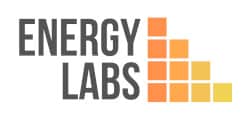When it comes to ventilation systems in buildings, there are two main types: extraction-only air systems and supply/extract air systems. Both types of systems are designed to remove stale and unwanted air from the building, but they differ in how they replace that air with fresh air.
Extraction-only air systems are the simplest and cheapest method for ventilation. These systems work by extracting stale air from areas such as the kitchen, bathroom, and toilet. However, the air that is extracted and pushed out from the building must then be replaced somehow. Traditional extraction-only systems rely on air seeping into the building through small openings and cracks around windows, doors, ceilings, and roofs. This replacement air from outside is not controlled, it can be cold or hot, depending on the weather outside, and can cause drafts and temperature fluctuations inside the building.
Supply/extract air systems, on the other hand, work by first stripping the unwanted extract air of its thermal energy, and then transfer the majority of this energy to the fresh air that is being supplied into the building. This is a Central Heat Recovery Ventilation system, it helps to maintain a consistent temperature inside the building and reduce energy costs.
For example, in winter the outside air may be 7°C, but inside your home it’s a comfortable 21°C. A simple extraction-only air system would exhaust to the outside 21°C air from your house, and then draw in 7°C air from outside, which can be uncomfortable for those inside, but most of all costs you money to heat up this cold air to 21°C again. However, a supply/extract air system would in this situation extract the heat from the stale 21°C air first, and only then exhaust it at ~9°C. The fresh incoming cold air from outside would be at 7°C before it passes through the special crossflow heat exchanger, but then it’s supplied into your home at 19°C… meaning you don’t experience discomfort and you dramatically save on your heating bills, while having high quality (and filtered) fresh air supplied throughout your home.
It’s important to note that supply/extract ventilation systems offer more benefits over the extraction-only systems. They provide a controlled supply of fresh air, which helps to keep the temperature inside the building more consistent, reduce the need for heating and cooling, and improve indoor air quality. They are also more energy-efficient, as they recover heat from the stale air that is being exhausted from the building, which leads to lower energy costs.
In conclusion, the main difference between extraction-only and supply/extract ventilation systems is how they replace stale air with fresh air. Extraction-only systems rely on air seeping into the building through small openings and cracks, while supply/extract systems use a controlled supply of fresh air and recover heat from stale air, which leads to better indoor air quality and energy savings.
